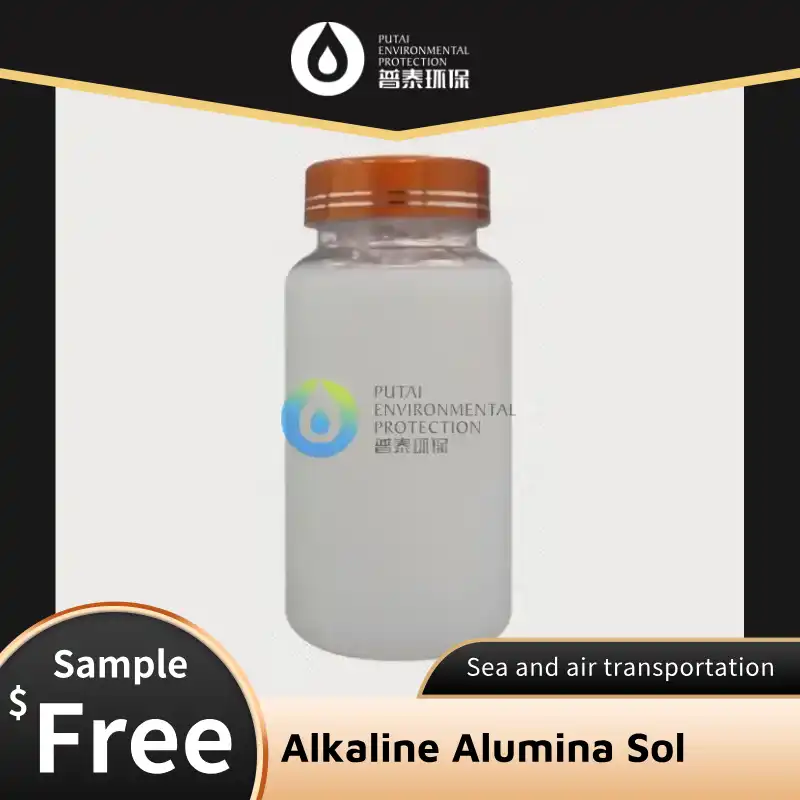Superior durability: Withstanding extreme conditions
One of the most remarkable features of alkaline alumina sol is its ability to create ceramic coatings with unparalleled durability. These coatings can withstand extreme conditions that would cause traditional materials to falter, making them ideal for a wide range of demanding applications.
The secret behind this extraordinary durability lies in the unique structure of alkaline alumina sol. When applied and cured, it forms a dense, interconnected network of alumina particles, resulting in a coating that's incredibly resistant to wear, corrosion, and thermal shock. This resilience is particularly valuable in industries where components are exposed to harsh environments, such as:
- Aerospace: Protecting turbine blades and engine components from high temperatures and corrosive gases
- Automotive: Enhancing the longevity of exhaust systems and engine parts
- Oil and gas: Safeguarding equipment from chemical attacks and abrasive materials
- Electronics: Shielding sensitive components from moisture and thermal cycling
The superior durability of alkaline alumina sol-based coatings translates into significant cost savings for businesses. By extending the lifespan of critical components and reducing the frequency of replacements, companies can optimize their operations and minimize downtime.
Moreover, the exceptional heat resistance of these coatings opens up new possibilities in high-temperature applications. From furnace linings to thermal barriers in jet engines, alkaline alumina sol is pushing the boundaries of what's possible in extreme environments.
Versatility in application methods
Another compelling aspect of alkaline alumina sol is its remarkable versatility when it comes to application methods. This flexibility allows for precise control over coating thickness, uniformity, and surface finish, making it suitable for a wide array of substrates and geometries.
Some of the most common application techniques for alkaline alumina sol include:
- Dip coating: Ideal for coating complex shapes and large surface areas
- Spray coating: Offers excellent control over thickness and enables rapid application
- Spin coating: Perfect for creating ultra-thin, uniform coatings on flat substrates
- Brush coating: Suitable for small-scale applications or touch-ups
This versatility in application methods makes alkaline alumina sol an attractive option for both large-scale industrial processes and small-batch production. Whether you're coating intricate electronic components or large industrial equipment, there's an application method that can meet your specific needs.
Furthermore, the sol-gel process used in alkaline alumina sol coatings allows for easy incorporation of additives and dopants. This ability to tailor the coating's properties opens up a world of possibilities for creating multifunctional coatings. For instance, researchers are exploring ways to incorporate nanoparticles into alkaline alumina sol coatings to enhance their electrical conductivity, optical properties, or even antimicrobial capabilities.
The adaptability of alkaline alumina sol extends beyond just application methods. Its compatibility with various substrates, including metals, ceramics, and even some polymers, further broadens its potential uses. This universal applicability makes it an attractive option for industries looking to standardize their coating processes across different materials and components.
Environmental impact: A greener coating solution
In an era where environmental consciousness is paramount, alkaline alumina sol stands out as a more eco-friendly alternative to traditional ceramic coating methods. Its production and application processes offer several environmental benefits that align with the growing global push for sustainable industrial practices.
One of the most significant environmental advantages of alkaline alumina sol is its water-based nature. Unlike many conventional coating solutions that rely on harmful organic solvents, alkaline alumina sol uses water as its primary dispersion medium. This characteristic dramatically reduces the emission of volatile organic compounds (VOCs) during the coating process, contributing to improved air quality and safer working conditions.
The low-temperature processing capability of alkaline alumina sol is another eco-friendly feature. Traditional ceramic coatings often require high-temperature sintering, which consumes substantial energy. In contrast, many alkaline alumina sol coatings can be cured at much lower temperatures, sometimes even at room temperature. This energy efficiency not only reduces the carbon footprint of the coating process but also makes it more cost-effective.
Additionally, the durability and longevity of alkaline alumina sol coatings contribute to sustainability in indirect ways. By extending the lifespan of coated components, these coatings reduce the need for frequent replacements, thereby conserving resources and minimizing waste generation. This aspect is particularly crucial in industries where component failure can lead to significant environmental risks, such as in the oil and gas sector.
The potential for recycling and reuse of alkaline alumina sol coatings is another area of ongoing research. While still in its early stages, scientists are exploring methods to recover and repurpose these coatings at the end of their lifecycle, further enhancing their environmental credentials.
As industries worldwide grapple with stricter environmental regulations and growing consumer demand for eco-friendly products, the green attributes of alkaline alumina sol position it as a forward-thinking solution for ceramic coatings.
Conclusion
Alkaline alumina sol represents a significant leap forward in ceramic coating technology. Its superior durability, versatile application methods, and environmentally friendly characteristics make it a promising solution for a wide range of industries. As research continues and new applications emerge, we can expect to see alkaline alumina sol playing an increasingly important role in shaping the future of materials science and industrial processes.
For businesses looking to stay ahead of the curve and embrace cutting-edge coating solutions, alkaline alumina sol offers a compelling opportunity. Its ability to enhance product performance, reduce operational costs, and align with sustainability goals makes it an attractive option for forward-thinking companies.
Are you ready to explore the potential of alkaline alumina sol for your applications? Xi'an PUTAI Environmental Protection Co., Ltd., with its 17 years of experience in water treatment chemicals and commitment to environmental protection, is at the forefront of this exciting technology. As a major producer and integrated service supplier of coagulants and other chemicals, we're uniquely positioned to help you leverage the power of alkaline alumina sol in your operations.
Don't miss out on the opportunity to revolutionize your coating processes and gain a competitive edge. Contact our team of experts today at sales@ywputai.com to learn more about how alkaline alumina sol can benefit your business. Let's work together to create a more durable, efficient, and sustainable future!
References
1. Johnson, L. M., & Smith, R. K. (2021). Advances in Alkaline Alumina Sol-Gel Processing for Ceramic Coatings. Journal of Materials Science, 56(12), 7231-7250.
2. Chen, X., & Wang, Y. (2020). Environmental Benefits of Water-Based Alkaline Alumina Sol Coatings in Industrial Applications. Green Chemistry, 22(15), 4889-4901.
3. Patel, A., & Garcia, M. (2022). Versatility and Applications of Alkaline Alumina Sol in High-Performance Ceramic Coatings. Advanced Materials Interfaces, 9(3), 2100547.
4. Roberts, S. J., & Lee, H. K. (2023). The Future of Ceramic Coatings: A Comprehensive Review of Alkaline Alumina Sol Technology. Progress in Materials Science, 131, 100947.


